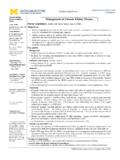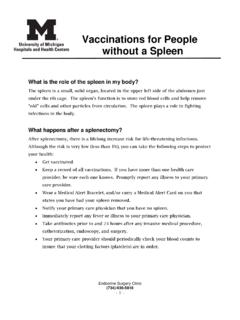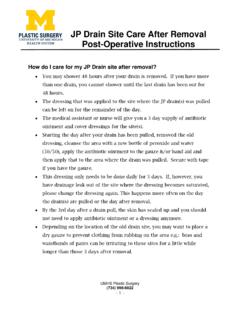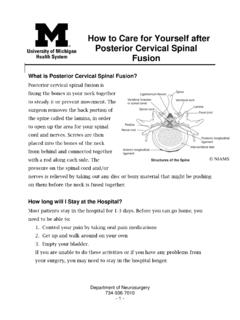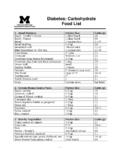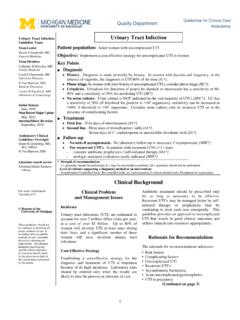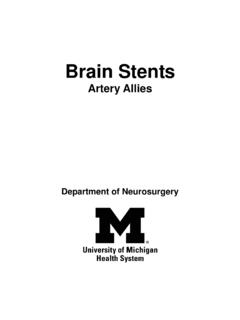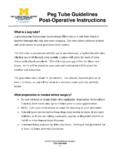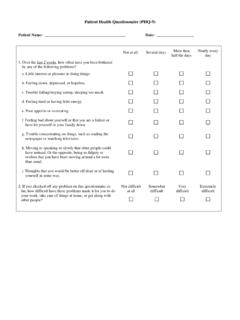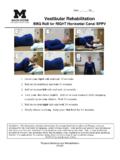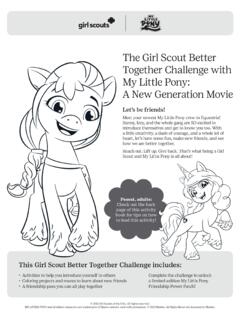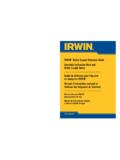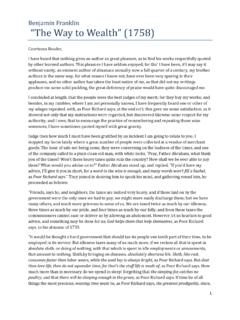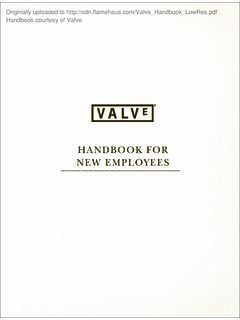Transcription of ‘Mother’s Little Helper’: The Crisis of Psychoanalysis and ...
1 Mother s Little Helper : The Crisis of Psychoanalysisand the Miltown ResolutionJonathan MetzlIn the 1960s and 1970s, psychopharmacological medications seemed toburst onto the American scene. Popularised and problematised in thenotion that these drugs were Mother s Little Helpers , the pills becameknown as the treatments of choice for the pressures of motherhood, single-hood and other historically specific forms of essentialised womanhood. Doctor please/Some more of these sang the Rolling Stones in the song Mother s Little Helper .1 Jaqueline Susann suggested that psychopharma-ceuticals were a woman s best friend when it came to dealing with thepressures of working in a man s world, while Barbara Gordon informed millions of Americans about the untoward effects of a woman s treatmentwith, addiction to, and withdrawal from most important, nearlyall of the research supporting the notion that psychopharmacologicalmedications were over-prescribed to mothers was conducted during thebenzodiazepine craze between 1965 and is wholly understandable, then.
2 That many social scientists, culturalcritics and historians of medicine assume Mother s Little Helpers to be a1960s and 1970s phenomenon. For example, Ruth Cooperstock s studiesof medical communication link the propensity for women to be far morelikely than men to describe their problems in psychological or social terms (and thus more frequently diagnosed with psychoneurosis, anxiety, andother mental instabilities ) to the wide availability of the other benzo-diazepines in the Valenstein similarly locates the problem inthe 1970s, arguing that there is no doubt, as in the Rolling Stones song Mother s Little Helper , far too many women had the habit of runningfor the shelter of the pill that would help them get through their day.
3 5 And Mickey Smith s analysis of pharmaceutical trends begins in the mid-1960s because, according to Smith, Little data exists supporting the argumentGender & History ISSN 0953 5233 Jonathan Metzl, Mother s Little Helper : The Crisis of Psychoanalysis and the Miltown Resolution Gender & History, August 2003, pp. 240 267. Blackwell Publishing Ltd. 2003, 9600 Garsington Road, Oxford OX4 2DQ and 350 Main Street, Malden, MA 02148, tranquillisers and other anxiolytics were overprescribed to women inthe 1950s , in the way of outcome studies, cost-benefit analyses, or othermeans by which gender-imbalanced prescription patterns would later on the Valium craze of the 1970s, however, has caused manyscholars to overlook the 1950s as a decade in which key links were forgedbetween mothers and psychopharmacological medications.
4 During the1950s, the notion that newly discovered tranquillisers for outpatient psy-chological problems treated existing concerns about a host of specificallymaternal conditions entered the American cultural imagination. Whetheror not this association between mothers and medications took place inclinical interactions,7it clearly did in the popular print sources that are my focus in this essay. Over the time period of my study, 1955 to 1959,articles about pharmaceutical miracle cures filled leading mass circulationnews magazines (Newsweek, Time, Science Digest) and women s magazines(Cosmopolitan, Ladies Home Journal).
5 These magazines reached vastaudiences, and were immensely influential in presenting a new type ofdoctor patient prescription interaction to middle-class such as Henry Safford s regular Tell me Doctor section in Ladies Home Journaland Walter Alvarez s Ask the Doctor in Cosmopolitanex-plained how, thanks to psychopharmacology, emotional problems couldbe cured simply by visiting a doctor, obtaining a prescription and taking apill. Invariably, these problems ranged from a woman s frigidity, to a bride suncertainty, to a wife s infidelity. The predominance of such conditionssuggests how psychopharmaceuticals came of age in a post-war consumerculture intimately concerned with the role of mothers in maintainingindividual and communal peace of mind.
6 As a result, the 1950s set precedentsconnecting women and psychopharmaceuticals that lay the foundationfor Mother s Little Helpers in the decades to what follows, I explore this marriage of mothers and medicationsthrough the rhetoric surrounding Miltown (meprobamate), the miraclecure for anxiety that became America s first psychopharmacologicalWonder Drug. Brought to the market in 1955, the demand for Miltownand other minor tranquillisers (Equanil, reserpine) soon surpassed anymedications ever marketed in the United flooded doctors offices demanding the drug.
7 Pharmacies hung window signs reading Outof Miltown and More Miltown Tomorrow .11By the end of 1956, accord-ing to the magazine Consumer Reports, one in twenty Americans wastaking Miltown or another tranquilliser in a given month, and by 1957 the number of prescriptions written for these drugs totaled 35 million arate of one prescription every second throughout the year .12 More than abillion tablets have been sold , added the January 1957 Scientific American, and the monthly production of 50 tons falls far short of the demand .13 Psychoanalysis and the Miltown Resolution241 Blackwell Publishing Ltd.
8 , historians of psychiatry often cite the Miltown phenomenonas psychiatry s first step away from a psychoanalytic paradigm undulyconcerned with mothers, toward a self-described biological 14paradigmconcerned with chemical imbalances and other non-gender-specific,neurophysiological absolutes. For instance, Frank Ayd, Edward Shorter,Michael Stone and Valenstein all point to the period of Miltown s popu-larity as a time when biological psychiatrists first rejected the prevailingpsychoanalytic notion that symptoms were conscious manifestations ofrepressed early maternal child authors rely on medicaljournal articles, laboratory reports and other scientific sources to arguethat the success of Miltown (and other psychotropic drugs introduced inthe 1950s)
9 16catalysed the belief that psychiatric symptoms were actuallysomatic phenomena resulting from aberrant electrical and chemical im-pulses. Such impulses could then be treated, not by an arduous progres-sion of fifty-minute hours, but by quick, chemical interventions. For theseauthors, the Miltown era thus signifies the beginning of a biologicalrevolution in American psychiatry in the latter half of the twentiethcentury. Ayd, founding member of the American College of Neuropsycho-pharmacology, calls these developments the point of origin of ModernPsychopharmacology , while Valenstein describes psychiatry s shift from blaming the mother to blaming the brain.
10 17 Through examining popular representation, however, I show howMiltown, and a seemingly gender-blind science of the 1950s, did indeedblame mothers in ways that helped shape psychopharmacology s massappeal despite the obvious fact that many fathers were among the one-in-twenty treated Americans. In my reading, the maternal pathologies con-structed in the popular press reveal how Miltown treated both biologicalsymptoms, and the symptoms of a middle-class American culture facing a fundamental change in gender roles. The articles I examine share acommon perception that white, middle-class, heterosexual mothers voicedgrowing unrest with social pressures urging a return to the home, or withthe constraints of a new femininity.
